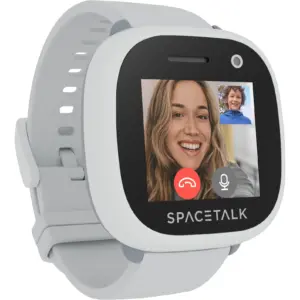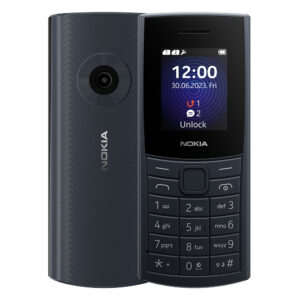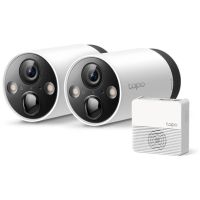It’s natural to want to protect your child from harm, but you can’t be by their side every moment of the day. It’s important they learn to take responsibility for their personal security and know how to stay safe when you’re not around. Teaching them these safety basics is a great start.
9 things every child should know about safety
1. Use the buddy system
Don’t wait until your child is a tween to teach them there is safety in numbers. Even toddlers can be introduced to the buddy system and learn that they shouldn’t go anywhere alone.
Tip: Consider getting your child a GPS tracker. These devices come in a range of prices and designs and are outfitted with GPS and other tracking technologies that can help you locate your child if they get lost.
Price is accurate as of publish date. Read full disclaimer.
The Spacetalk Adventurer 2 isn’t just a smartwatch for parents; it includes features that kids enjoy too. Kids can choose how to communicate, whether it’s through HD-quality video calls, voice calls, text messages or taking photos through the 5MP camera. The band is slim, light, and flexible, meaning it's comfortable to wear, too.
A big bonus for parents is that it features a parent-controlled contact list, which means kids won't be able to add any new contacts themselves - only those with the parental app can do so.
2. Never give out passwords
Explain to your kids that you are the only person who should know their passwords. Remind them that giving out their passwords to others (even to friends) can have major ramifications, like someone taking over their social media or email accounts.
Tip: Teach your child how to create a strong password, or use a password manager and generator created especially for kids to ensure their passwords are hard to break. For more tips, read our kids internet safety guide.
3. When in doubt, use the family secret code
Create a family secret code, and teach your child that they should not leave a location with anyone who does not know it. Make the code something you, your kids, and their caregivers won’t easily forget, and practice using the code regularly.
Tip: If your child has a mobile phone, create a secret text code they can send you to let you know they’re in an uncomfortable situation. Remind them to call 000 in an emergency.
The Nokia 110 4G is to the next generation what the old-school Nokia "brick" was to the original generation or prepaid mobile phone wielders: namely, a phone with a durable design and epic battery life. While it has very basic smart features, the Nokia 110 4G is mostly about calling and texting than anything else.
This focus on basic functionality over smarter features also means no Wi-Fi, plus the camera is only good for very basic photography.
4. Don’t open the door to strangers
Before you leave your child home alone, teach them basic home safety practices, starting with keeping the doors locked. Stress that they should never open your home’s door to someone they don’t recognise and discuss which family and friends can be let into your home when you’re not there.
Tip: If you have a home security system, teach your child how to arm and disarm the system. You might also consider positioning a security camera at the front door so your child can see who is outside without opening the door.
The TP-Link Tapo C420S2 Wire-Free Camera System is one of the best value security camera systems in Australia. For just under $400, you get a wireless, weatherproof 2K camera, plus a hub, which can be used to build a fully decked-out smart home system.
We really like that this system includes local storage capabilities and its IP65 waterproofing rating means you can install the cameras just about anywhere.
Plus, the Tapo C420S2 is compatible with Tapo's solar panels, meaning you can keep your cameras fully charged and extend the (not so impressive) battery life.
For more information, read our full Tapo C420S2 review.
5. Trust your feelings
From a young age, teach your kids that trusting their gut could help keep them safe. Explain that when a situation or person doesn’t “feel right” there’s often a reason. If your child has a mobile phone, remind them to use your family’s secret text code if they feel they can’t call you. You can also invest in a kids' smartwatch with an SOS button that calls you directly.
Tip: Role-playing through various scenarios is a great way to prepare kids for emergencies and help them think about what to do should they feel uncomfortable.
6. Never keep “unsafe secrets”
It’s not uncommon for paedophiles and other criminals to tell a child to keep their activity secret. So it’s important to explain to your child the difference between “safe secrets” and “unsafe secrets,” and remind them they should never keep a secret that makes them feel uncomfortable.
Tip: Reassure your child that you support them, and they can tell you anything — even if they think you might get angry.
7. Call 000 in an emergency
There’s a good chance you’ve already told your child to call 000 in an emergency, but depending on their age and development, they might not know what constitutes a dangerous situation. Talk to your child about when they should call 000, then role-play to help them gain a better understanding. This is a good time to ensure your child can state their full name, age, and address.
Tip: Whether you have a home phone or not, it’s important your child knows how to call 000 from any phone in your house. Be sure they can do so without having to enter the phone’s passcode.
8. Beware of identity theft
Although identity theft seems like a grown-up problem, it happens to kids too. Kids don’t think twice about posting information like their date of birth, school, or suburb to their online profiles. Sit down with your child, check their online activity for identifying information, and have them delete it.
Tip: Instead of telling your kids they aren’t allowed to post personal identifying information, explain why it’s a bad idea and they may be more likely to comply.
9. Go to the neighbourhood safe house
Identify a neighbourhood “safe house,” which is a house your child can go to if they are feeling scared or need help and you’re not home. Make sure your child knows how to get there and, most importantly, that they feel comfortable with the family who lives in the house. Be sure to provide the homeowners with your contact information.
Tip: If you don’t already have one, create a home escape plan, and use the neighbourhood safe house as the place your family will meet during an emergency.
Final word
How you go about teaching these safety skills, and your child’s ability to understand and practice them, depends on factors like their age, developmental level, and maturity. The important thing is to start introducing them now so your child will feel more safe and secure when you’re not by their side.
FAQ
In Australia, there's no legal age limit for leaving kids on their own, although in Queensland, it is illegal to leave a child under 12 years of age for an unreasonable amount of time without supervision and care.
Teaching your child about 'stranger danger', creating safe strategies for when they are home alone and being able to contact your children are all ways to help keep your child safe.



